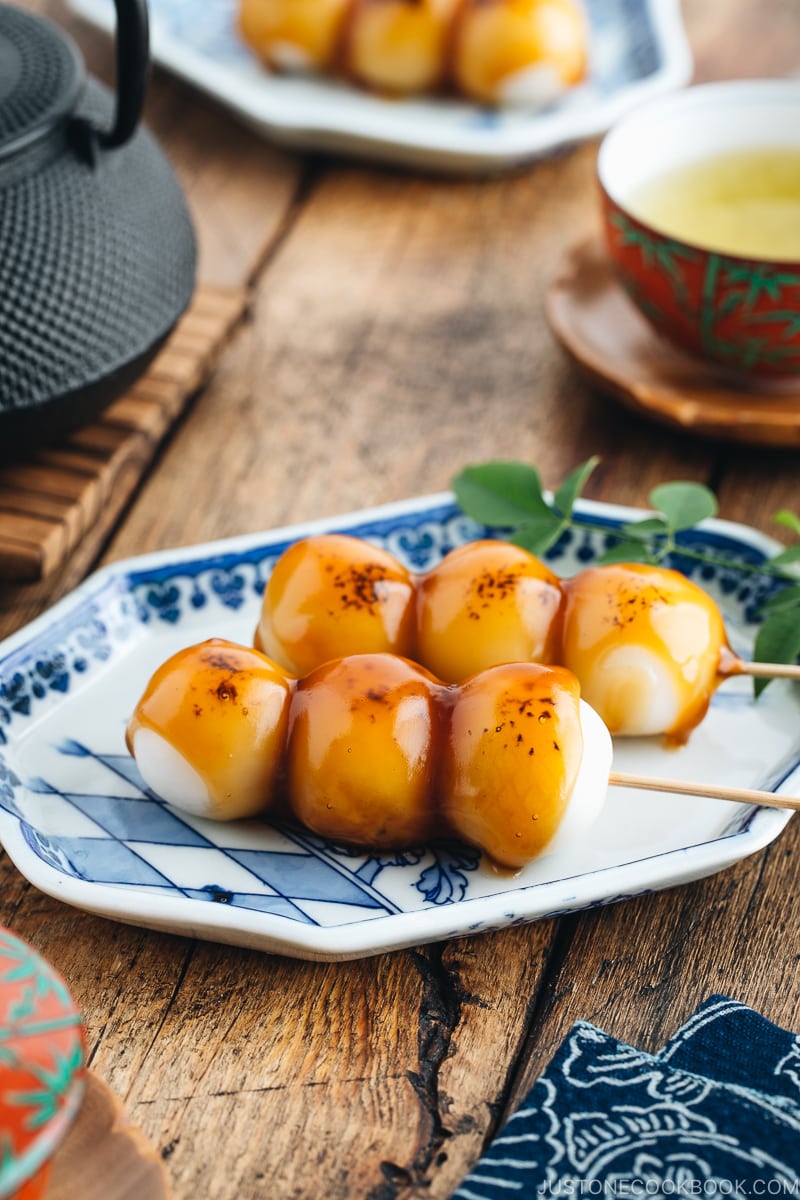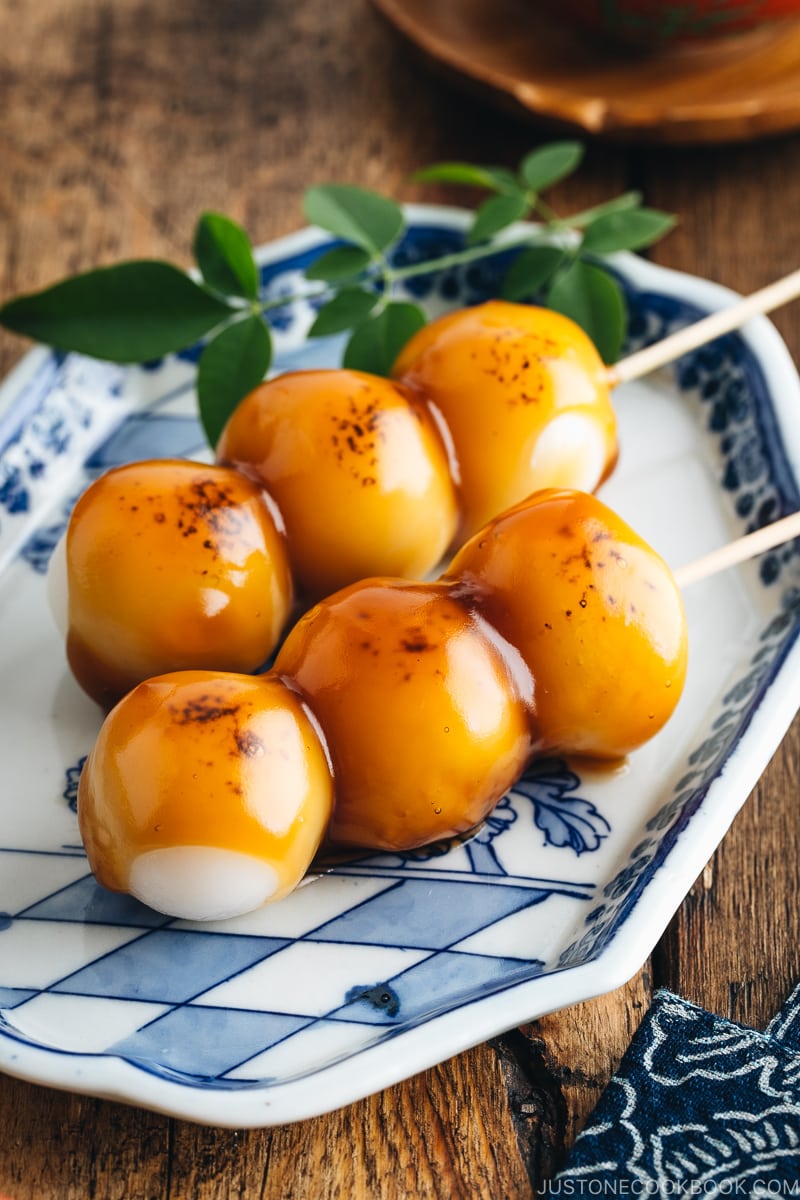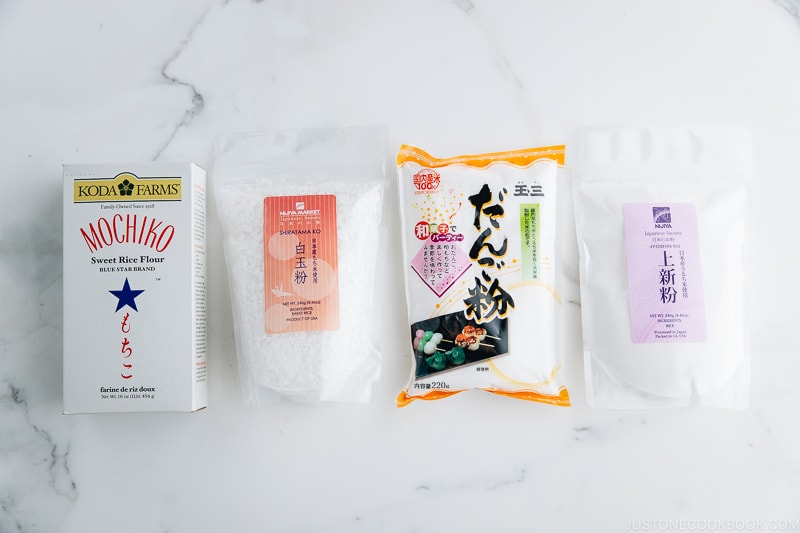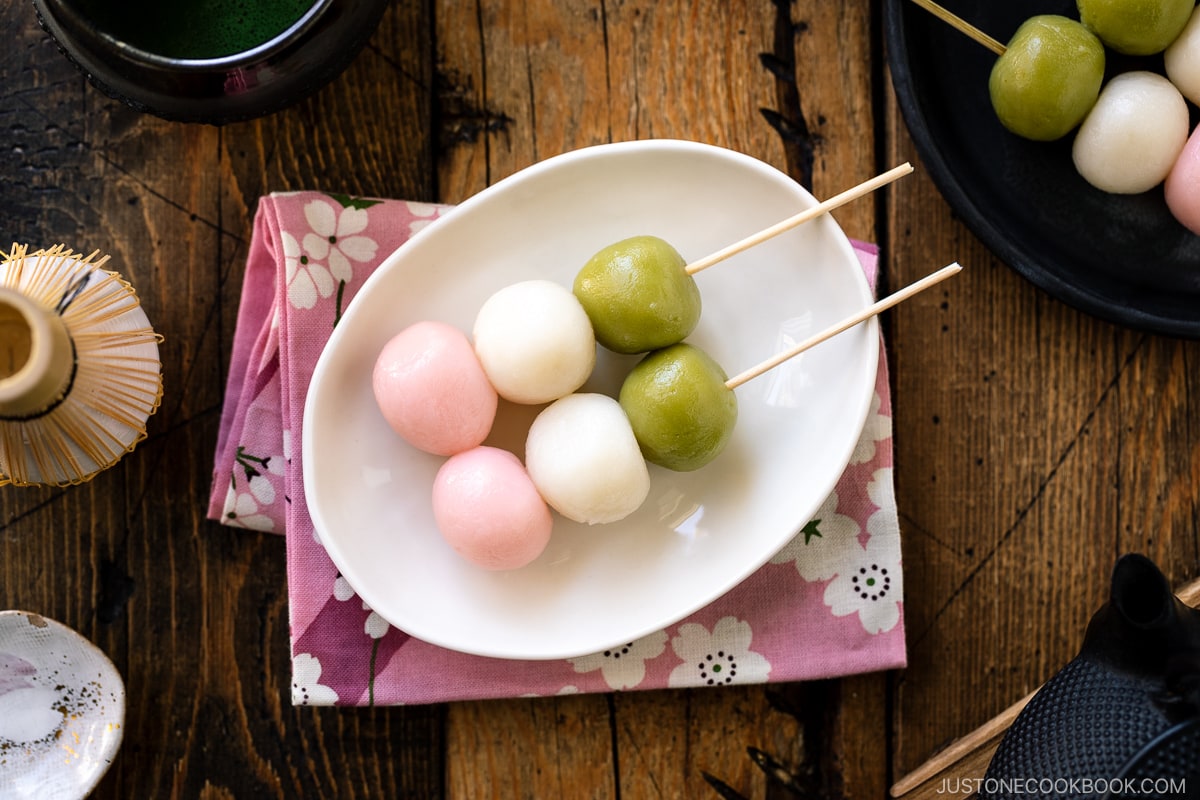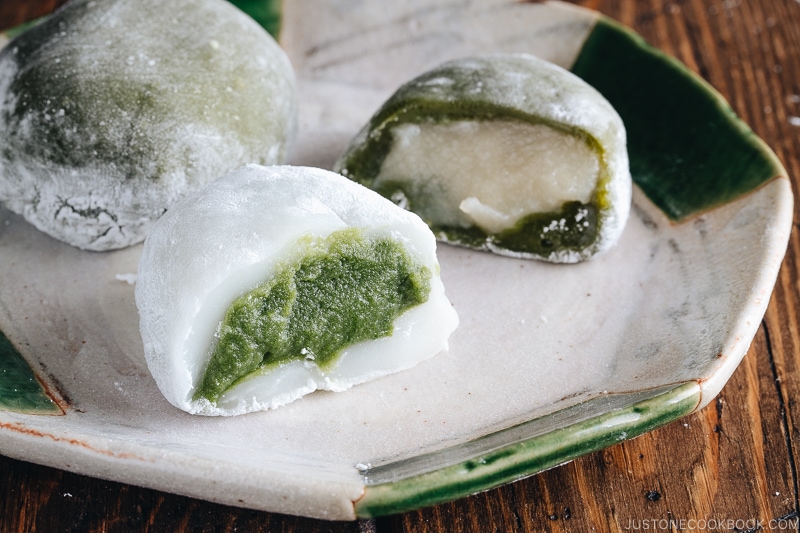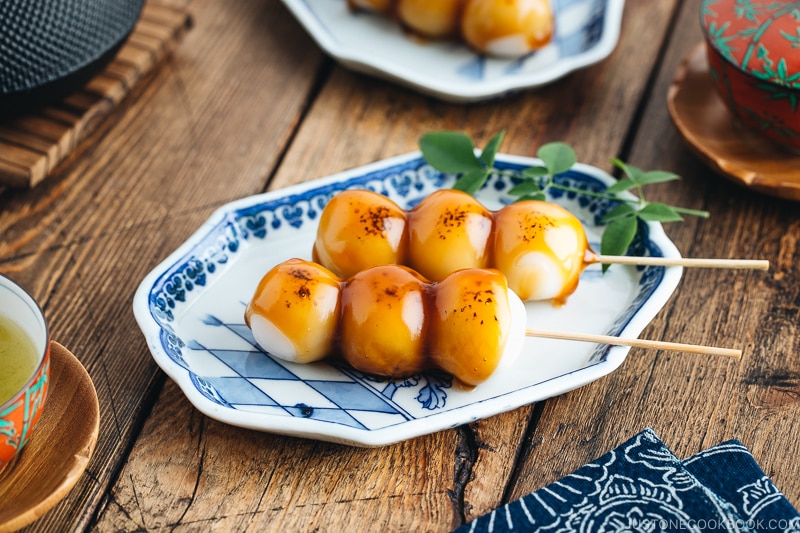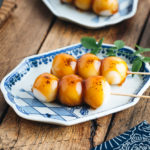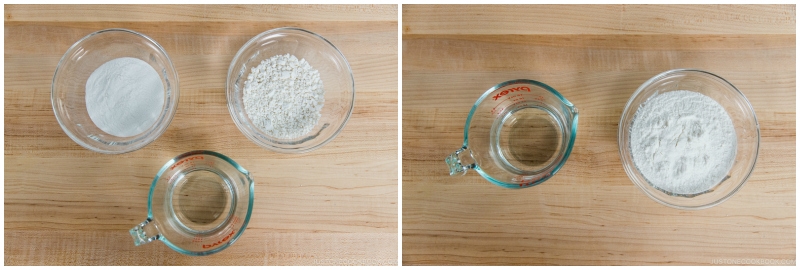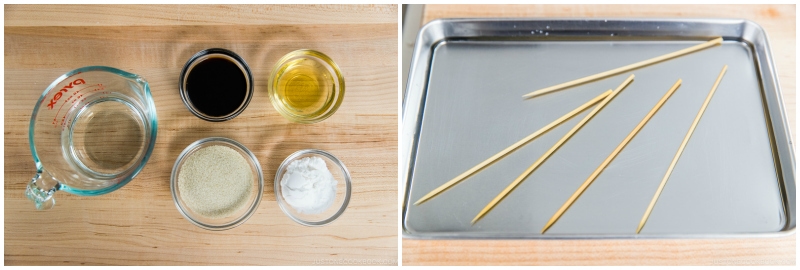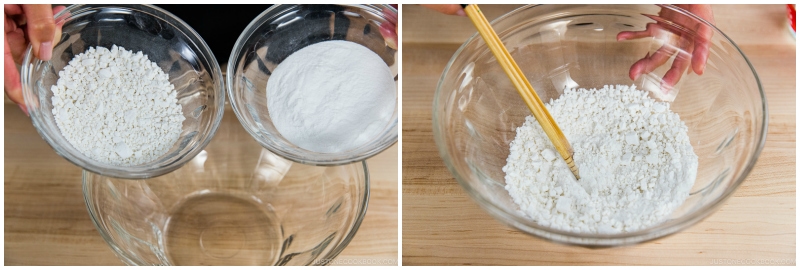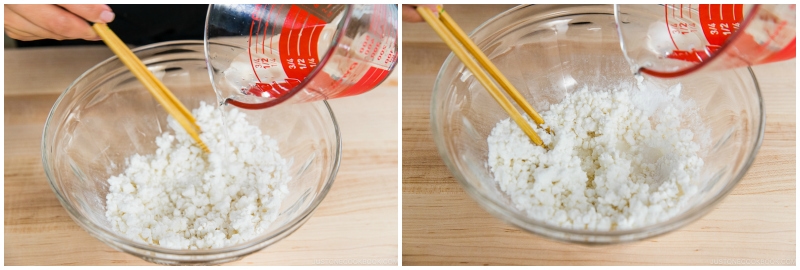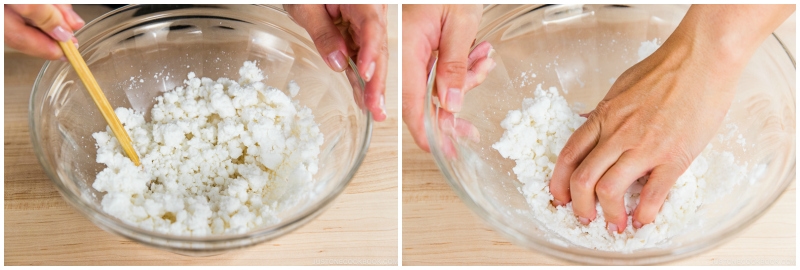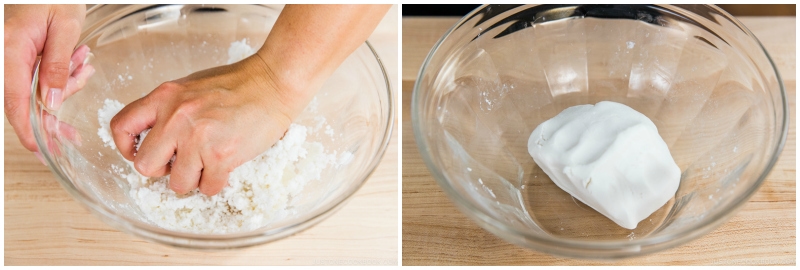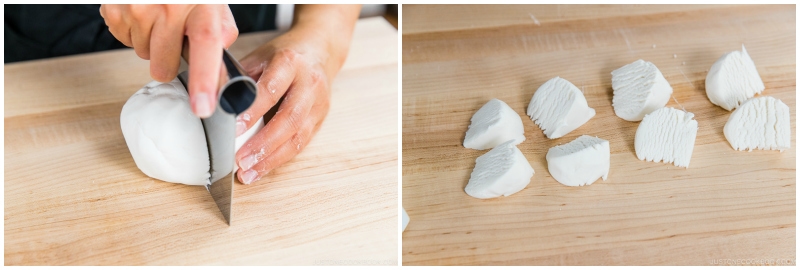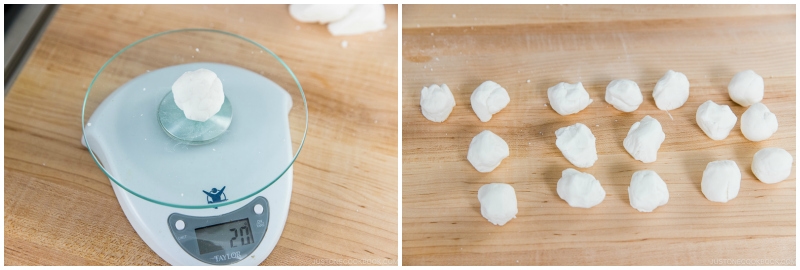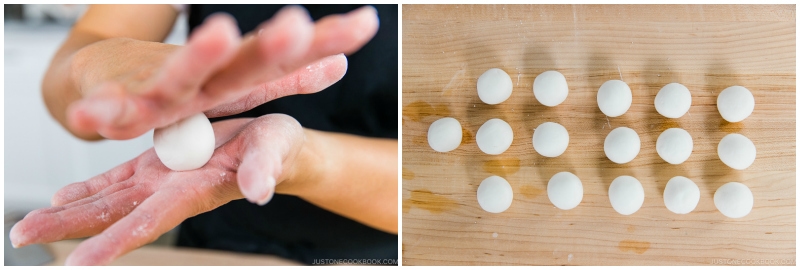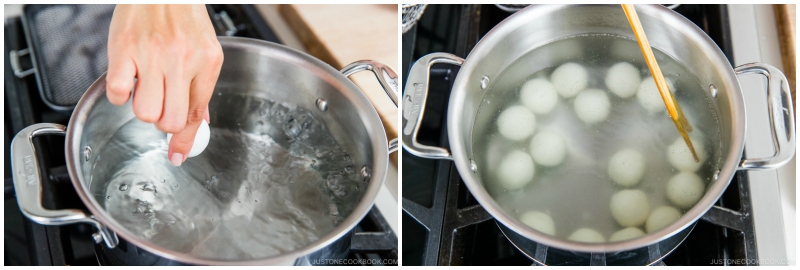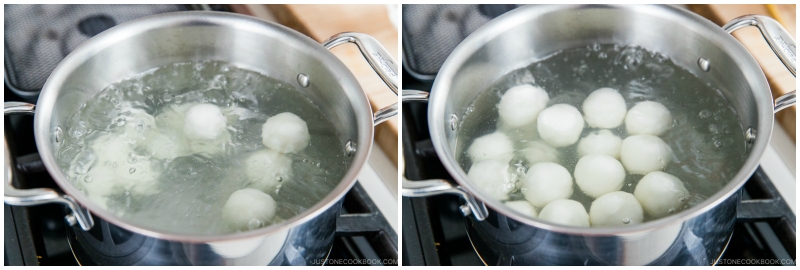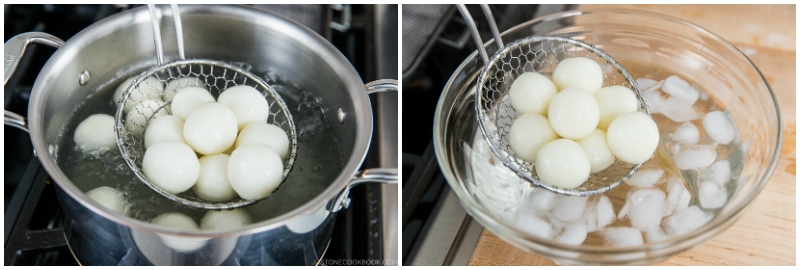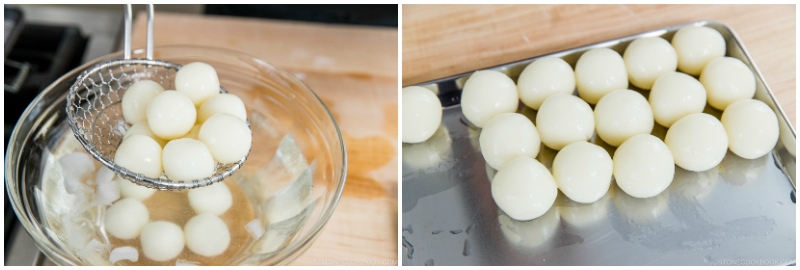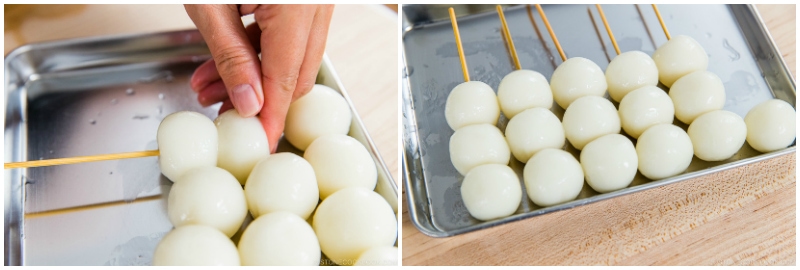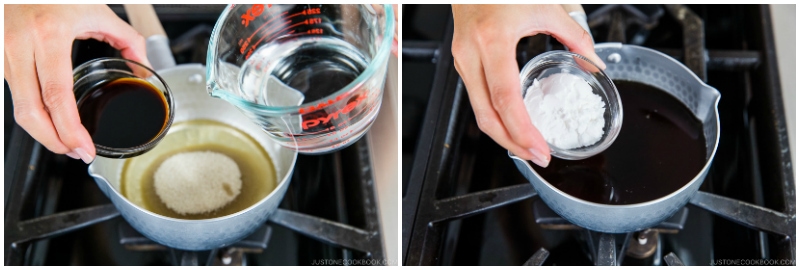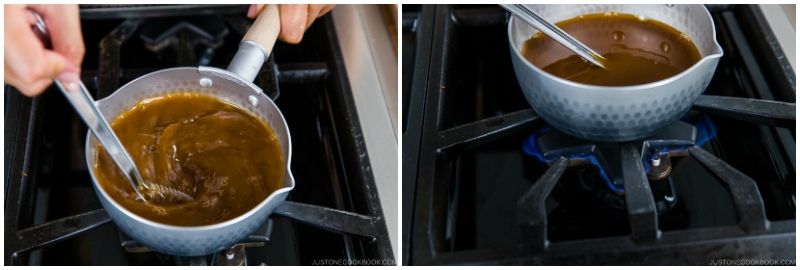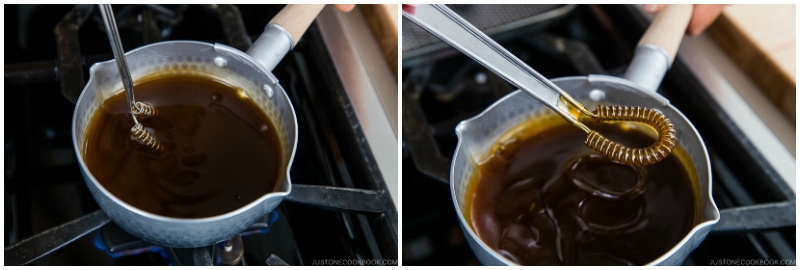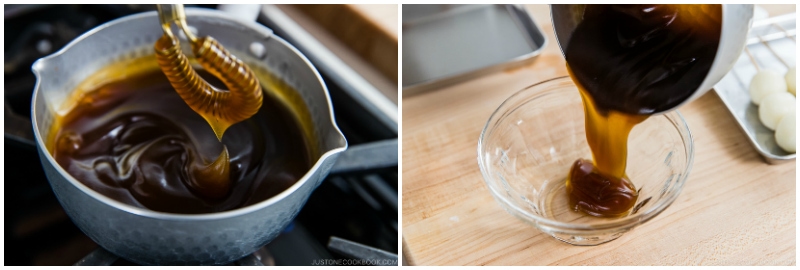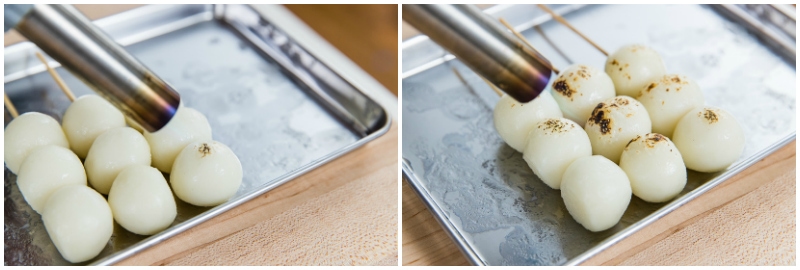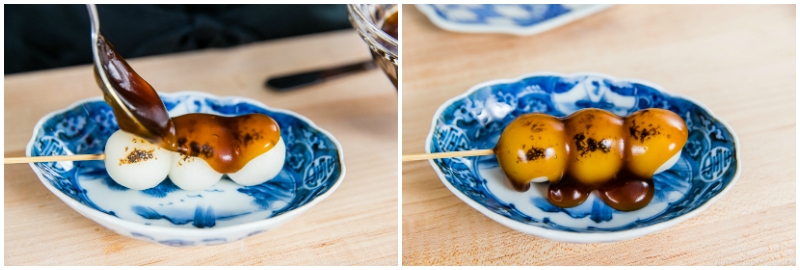Mitarashi Dango (みたらし団子) is a type of dango, sweet rice dumplings, skewered onto a bamboo stick. Typically, three to five dumplings (traditionally five) are on a skewer and covered with a sweet soy sauce glaze. It is fairly easy to make these dango at home. These chewy dumplings are mildly sweet and get a hint of char from grilling. When we brush the glaze over the dumplings, each bite is gooey, savory, and satisfying without being overly sweet. You’ll love the contrasting textures and flavors. They make a fun, delicious snack with a hot cup of green tea. Also, check out my Hanami Dango and Shiratama Dango recipes!
Origin of Mitarashi Dango
Mitarashi dango originated from the Kamo Mitarashi Tea House in Kyoto. The dango was thought to be made as an offering for the gods, and the name was given after the bubbles of the mitarashi (御手洗), a font of purifying water placed at the entrance of a famous shrine in the city. Street vendors in Kyoto started selling dango as a snack, which quickly gained popularity among many visitors. Today you can find mitarashi dango being sold at supermarkets, convenience stores, and specialty sweet shops all over Japan.
Ingredients for Mitarashi Dango
To make an authentic dango, you will need the following ingredients.
A combination of joshinko and shiratamako (or dangoko instead) – I’ll discuss further on this topic below. Boiling water The delicious sweet and savory glaze – soy sauce, sugar, mirin, potato starch (cornstarch)
How to Make Mitarashi Dango
The recipe card below guides you through with detailed instructions and step-by-step pictures, but here’s a quick summary.
Learn about Japanese Glutinous Rice Flour and Rice Flour
To achieve the perfect texture for the dumplings, you need to use the following types of rice flour: I recommend an equal proportion: 50–50 ratio for both flours. The combination will give you the bouncy, chewy but not too sticky texture. If you like the chewy mochi-like texture, you can decrease joshinko to 40% and increase shiratamako to 60%. But be careful not to increase the amount of shiratamako too much, as the dango will get too soft and the texture becomes more like shiratama dango. The mitarashi dango needs to be firmer than the shiratama dango. When you go to a Japanese grocery store, you may find the third type of flour called dangoko (団子粉), a combination of rice flour and glutinous rice flour (the ratio is up to the manufacturer). If you have trouble finding joshinko and shiratamako, dangoko might be your best option. The texture of dumplings made with dangoko is firmer and chewier.
Where to buy johshinko and shiratamako?
Can I use mochiko in place of shiratamako and joshinko?
Although mochiko is similar to shiratamako, it’s produced differently. Mochiko yields a very soft and tender texture, which is unsuitable for dango. However, a reader has shared her experience of achieving good results by adding a spoonful of cornstarch to mochiko.
How about Thai glutinous rice flour?
Thai glutinous rice flour is not the same as Japanese glutinous rice flour, and it will not turn out right. To make the dango, you’ll need the flours I listed above. Q: Is it possible to make the dango a few hours ahead? Sure, you can. However, if you like to keep the texture softer and tender for a longer time, you can add sugar to the flour at the start. The recommended amount of sugar is 20% of the flour’s weight, which is 40 grams. If you plan on making the sauce ahead of time, remove it from the heat before the consistency gets too thick. The moisture will evaporate and thicken the sauce as it cools. Q: If I make too much, can I store the leftover sweet soy sauce? Yes. You may store it in the refrigerator for 2~3 days or freeze it. Reheat it in the microwave or heat it up in a pot to enjoy it again.
More Traditional Japanese Desserts & Sweets To Enjoy
Hanami Dango Green Tea Mochi How to Make Mochi with a Stand Mixer Strawberry Mochi (Ichigo Daifuku) Tsukimi Dango Homemade Sweet Red Bean Paste(Anko)
Wish to learn more about Japanese cooking? Sign up for our free newsletter to receive cooking tips & recipe updates! And stay in touch with me on Facebook, Pinterest, YouTube, and Instagram. Editor’s Note: This post was originally published on May 14, 2012. It was republished with more helpful content, new images, and a new video on May 17, 2024.
